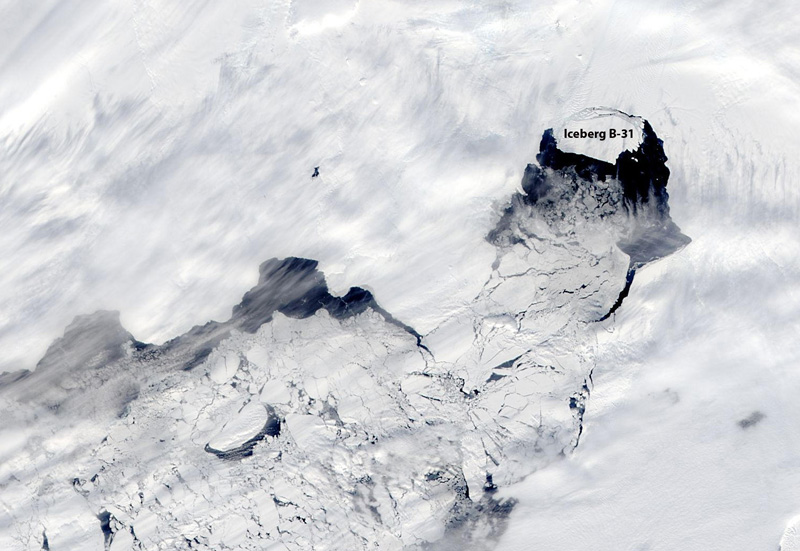
Photo Credit: NASA Aqua satellite
|
|
Floating away
Pine Island Glacier iceberg heads out to sea
From staff reports
Posted November 15, 2013
And away it goes.
Two years after a rift was spotted in the Pine Island Glacier Ice Shelf, an iceberg reportedly the size of Singapore has completely detached from Antarctica and is slowly heading out to sea.
NASA  reported this week that between Nov. 9 and Nov. 11, a large iceberg finally separated from the calving front of Pine Island Glacier's small ice shelf, as captured by the space agency's Aqua
reported this week that between Nov. 9 and Nov. 11, a large iceberg finally separated from the calving front of Pine Island Glacier's small ice shelf, as captured by the space agency's Aqua  satellite in the image above. Scientists aboard a plane as part of NASA's IceBridge
satellite in the image above. Scientists aboard a plane as part of NASA's IceBridge  mission to map Antarctica's changing ice sheets first detected a crack in the ice shelf in October 2011. [See previous article — Cracked: Rift spotted in Pine Island Glacier Ice Shelf before upcoming expedition.]
mission to map Antarctica's changing ice sheets first detected a crack in the ice shelf in October 2011. [See previous article — Cracked: Rift spotted in Pine Island Glacier Ice Shelf before upcoming expedition.]
Pine Island Glacier  , or PIG for short, has been under intense study by glaciologists and others in recent years because it is the fastest-flowing glacier in West Antarctica, with the potential to raise sea level. An expedition to the ice shelf in 2012-13, partly supported and funded by the National Science Foundation
, or PIG for short, has been under intense study by glaciologists and others in recent years because it is the fastest-flowing glacier in West Antarctica, with the potential to raise sea level. An expedition to the ice shelf in 2012-13, partly supported and funded by the National Science Foundation  , recently revealed the dynamics of the interaction between the ice shelf and the ocean. [See previous articles — Below the surface: New paper reveals ocean-ice dynamics below PIG ice shelf and Antarctica's ground zero: Expedition heads to Pine Island Glacier region to study thinning ice shelf.]
, recently revealed the dynamics of the interaction between the ice shelf and the ocean. [See previous articles — Below the surface: New paper reveals ocean-ice dynamics below PIG ice shelf and Antarctica's ground zero: Expedition heads to Pine Island Glacier region to study thinning ice shelf.]
Dubbed B-31 by the U.S. National Ice Center  , the new iceberg is estimated to be 35 kilometers by 20 kilometers. A team of scientists from the U.K. will track the 700 square-kilometer chunk of ice and try to predict its path using satellite data, according to NASA.
, the new iceberg is estimated to be 35 kilometers by 20 kilometers. A team of scientists from the U.K. will track the 700 square-kilometer chunk of ice and try to predict its path using satellite data, according to NASA.
“It is hard to predict with certainty where and when these things will drift,” said NASA glaciologist Kelly Brunt  . “Icebergs move pretty slowly, and watching this iceberg will be a waiting game.”
. “Icebergs move pretty slowly, and watching this iceberg will be a waiting game.”
For more information, see NASA's Earth Observatory page about the calving event  .
.





